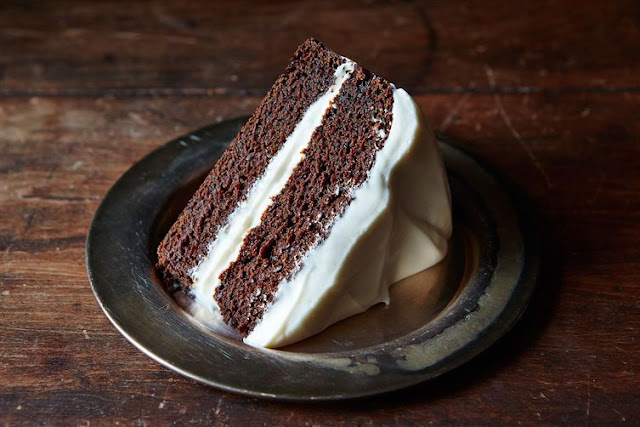WAYS OF CREATING COMIC ON YOUR PC
How to create a comic book on your pc
01. Start with an idea
You need an idea before you start out All things start with an idea; and your comic book or graphic novel is no different. As a storyteller, your best tool is a notebook (whether it be electronic or paper). My advice: keep it with you at all times. That way, when an idea pops into your head, you can jot it down. Don't worry if your idea isn't fully realized yet. Go with it. You never know where it'll take you. For example, when I interviewed Maya Posch on Roundabout: Creative Chaos, I never intended that conversation would be the catalyst for a new comic book. During the interview, we talked about having super powers. She made an off-handed comment about a "super cat" and almost a year later, G.E.N.T.S. was released.
02. Write a script
Get your idea down on paper and flesh it out One of the most common mistakes is to start drawing your comic book before working out your story. While you may feel like grabbing a blank sheet of paper – or launching your favorite drawing app – and just diving in, by doing so, you're likely setting yourself up for failure. Take the time to write a script. It doesn't need to be fancy and you don't need an expensive app to get it done. A simple text editor will do. However, if you're looking for a more robust app for writing, my preference is Scrivener. When it's time to write your script, there are four main points to keep in mind: Know your genre Understand your main character's goals/challenges Create a believable setting Include a beginning, a middle, and an end
03. Plan the layout
Organise the layout before you start drawing the actual comic Once your script is complete, it's time to start drawing. Well... it's almost time to start drawing. When working on the layout, your goal is to keep the reader interested. One way to do this is to end each page (maybe not all, but some) with a cliffhanger. Draw the reader in! Let them know something interesting is about to happen, but don't reveal what that is until they turn the page. I find the most efficient way to 'work out a layout' is by using thumbnails. Thumbnails, which are similar to storyboards, help work out any composition problems before you invest time into inking and coloring your drawings. Think of them as a very (VERY!) rough draft of your drawings, and of course, your layout. Note: Don't forget to leave room for the dialogue!\
04. Draw the comic
Whether you're working traditionally or digitally, drawing the comic can feel like a daunting task. But at this stage of the process, your work doesn't need to be perfect. Focus on getting your comic drawn; you can work on perfecting it later during the inking stage. Choosing the right tool (personal preference) I'm a digital artist, and my application of choice (for comics) is Manga Studio Ex. Because it's specifically designed for making comics, this seems like the obvious choice. But it's more than just that... the tools feel natural. If you're interested in learning more about Manga Studio, check out this review.
05. Time for inking and coloring
Now that you have your comic drawn (penciled), it's time for inking and coloring; two tasks that don't necessarily need to be done by the same person. Inking It is at this stage where you clean-up your drawings and add depth to your illustrations. If you're inking/coloring illustrations from another artist, don't be afraid to ask questions if things aren't clear. Colouring Choosing the colours can make or break a scene. In addition to proper color selection, not keeping your colours consistent can break things too. Imagine how confusing it would have been to see Superman's cape colored red in one page and green in another. While this silly example is just that – silly – the point is, keep things consistent or your readers may be confused.
06. Lettering
With great comic fonts around you don't have to hand-draw all the lettering An often overlooked task when creating a comic is lettering. You may have a great story. You may fantastic illustrations. But if your lettering is messed up, people won't read your story! I won't lie. I don't hand-letter my comics. Granted, I may hand-letter a few 'sound effect' words here and there, but generally speaking, all of my lettering is done using installed fonts. But not just any fonts! I like to use fonts that fit the comic. The biggest collection of comic book fonts can be found at Blambot. They have both free fonts and paid fonts. Be sure to check the font license before using any font in your work.
07. Selling and marketing
Tell everyone about your work! Congratulations! You made a comic. Now what? Selling and marketing your comic isn't easy. The best thing you can do is tell people. Tell your friends. Tell your family. Tell the world! Luckily, social media sites like Facebook and Twitter make this relatively easy. Your best best is to create a daily post telling everyone about your new venture. Let them know what it is and how they can get it. Just don't be a pest; don't flood their feed with your sales pitch. Keep it to once (maybe twice) a day.
08. Wrap Up
Creating a comic book or graphic novel takes a lot of work. If you have the skills and the time to tackle this task on your own, great! If not, don't be afraid to collaborate with another artist. And don't be afraid to ask questions. There are a lot of places on the web to help get you started. One of my all time favorites is Comics For Beginners.




Comments
Post a Comment